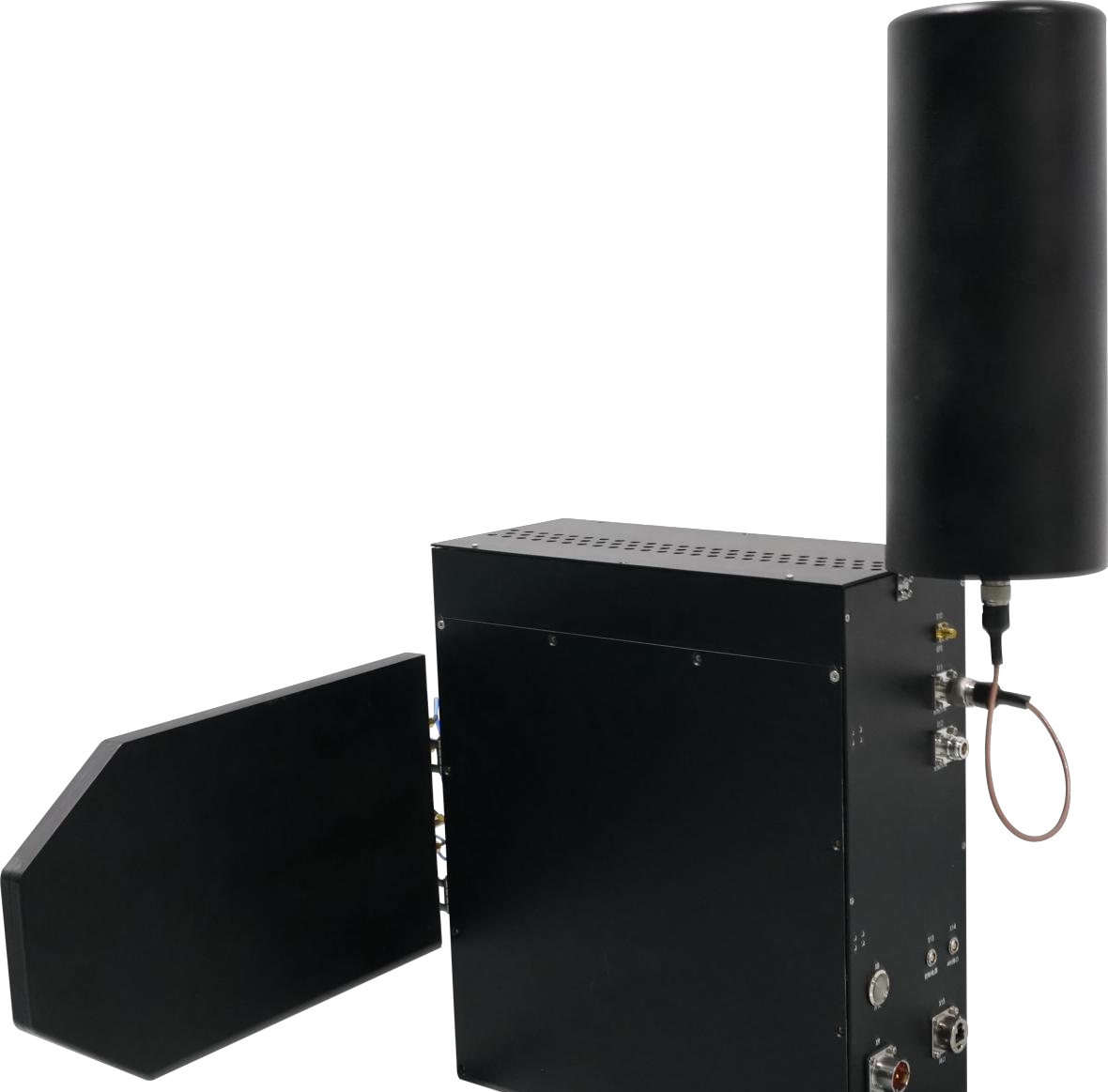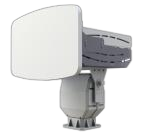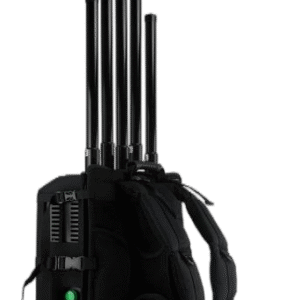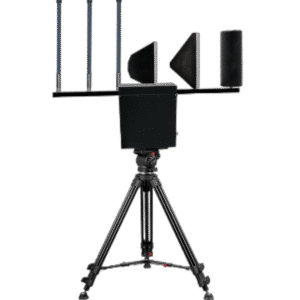The emergence of sophisticated unmanned aerial systems (UAS) has catalyzed the development of multi-layered defense technologies that transcend traditional detection and neutralization paradigms. Modern counter-drone warfare demands integrated solutions combining passive surveillance, active countermeasures, and deceptive tactics. This technical exposition examines the revolutionary tri-mode approach embodied in portable detection-jamming-spoofing integrated equipment, specifically analyzing how these systems establish comprehensive airspace sovereignty through technological convergence.
Unlike conventional dual-mode systems, tri-mode platforms introduce navigation manipulation capabilities, creating a defensive triad that addresses the full spectrum of drone threats—from amateur intrusions to sophisticated autonomous platforms. This paradigm shift represents not merely an incremental improvement but a fundamental reimagining of counter-UAS doctrine.
Technical Specifications and Comparative Analysis
Enhanced Operational Parameters
| Specification | TYZF-108 Tri-Mode | Dual-Mode Systems | Technological Leap |
|---|---|---|---|
| Frequency Coverage | 300 MHz – 6 GHz | 433 MHz – 5.8 GHz | 10x broader spectrum |
| Detection Range | ≥2.0 km | 1.5-2.5 km | Optimized coverage |
| Jamming Range | ≥1.5 km | 1.0-3.0 km | Balanced approach |
| Spoofing Range | ≥1.5 km | Not available | Unique capability |
| Battery Life (Detection) | ≥12 hours | 2-4 hours | 300-600% increase |
| Battery Life (Active) | ≥40 minutes | 30-45 minutes | Comparable efficiency |
| Installation Options | Portable/Fixed | Portable only | Dual deployment |
Frequency Domain Architecture
The system’s unprecedented 300 MHz to 6 GHz coverage represents a quantum leap in spectral awareness:
| Frequency Band | Bandwidth | Target Systems | Threat Category |
|---|---|---|---|
| VHF/UHF | 300-900 MHz | Long-range control | Industrial/military |
| L-Band | 900-1700 MHz | Telemetry, GPS | Navigation-dependent |
| S-Band | 2.0-4.0 GHz | WiFi, Bluetooth | Consumer drones |
| C-Band | 4.0-6.0 GHz | 5G control, video | Advanced platforms |
Power System Versatility
| Power Mode | Application | Runtime | Advantages |
|---|---|---|---|
| Battery Operation | Field deployment | 12h passive/40min active | Complete mobility |
| AC 220V Mains | Fixed installation | Continuous | Unlimited operation |
| Hybrid Mode | Semi-permanent | Battery backup + mains | Uninterrupted service |
Advanced Applications and Deployment Strategies
Tri-Mode Operational Doctrine
The integration of detection, jamming, and spoofing creates synergistic capabilities:
- Passive Detection Phase
- Ultra-wideband spectrum monitoring
- Zero electromagnetic emissions
- Covert threat assessment
- Pattern recognition and classification
- Active Jamming Phase
- Selective frequency targeting
- Adaptive power management
- Minimal collateral interference
- Force multiplication through ISM band focus
- Navigation Spoofing Phase
- GNSS signal manipulation
- Controlled landing enforcement
- Evidence preservation
- Non-destructive neutralization
Deployment Configuration Matrix
| Scenario | Mode Priority | Installation Type | Coverage Pattern |
|---|---|---|---|
| Border Security | Detection → Spoofing | Fixed elevated | Linear array |
| Event Protection | Detection → Jamming | Portable ground | Circular perimeter |
| Facility Defense | All modes simultaneous | Fixed rooftop | Overlapping zones |
| Mobile Convoy | Jamming → Detection | Vehicle-mounted | Moving bubble |
Radar Characteristics and Signal Processing
Passive Detection Architecture
The system employs cutting-edge passive radar technology, eliminating active emissions while maintaining superior detection capabilities:
- Wideband Software-Defined Radio (SDR)
- 20 MHz instantaneous bandwidth
- 300 MHz to 6 GHz frequency agility
- -140 dBm sensitivity threshold
- 14-bit ADC resolution
- Multi-Domain Signal Analysis
- Time-frequency distribution analysis
- Cyclostationary feature detection
- Wavelet transform processing
- Deep learning classification
- Environmental Adaptation
- Automatic gain control (AGC)
- Dynamic noise floor estimation
- Interference cancellation algorithms
- Weather compensation matrices
Navigation Spoofing Technology
| GNSS System | Frequency | Spoofing Method | Effectiveness |
|---|---|---|---|
| GPS L1 | 1575.42 MHz | Signal regeneration | 95% success rate |
| BeiDou B1 | 1561.098 MHz | Time offset injection | 93% success rate |
| Galileo E1 | 1575.42 MHz | Position manipulation | 94% success rate |
| GLONASS L1 | 1602 MHz | Coordinated deception | 92% success rate |
Regulatory Compliance Framework
Multi-Jurisdictional Certification
| Region | Passive Detection | Active Jamming | GPS Spoofing |
|---|---|---|---|
| United States | No restrictions | FCC authorization | Federal approval |
| European Union | CE compliant | ETSI licensing | Restricted use |
| Asia-Pacific | Country-specific | Government only | Military/LE only |
| Middle East | Security clearance | Defense ministry | Case-by-case |
Legal Deployment Guidelines
The tri-mode capability introduces complex regulatory considerations:
- Passive Detection: Generally unrestricted globally
- Active Jamming: Requires specific authorization
- GPS Spoofing: Highly regulated, often restricted to military/law enforcement
Comprehensive Packaging Configuration
Modular System Components
| Module | Weight | Dimensions | Function |
|---|---|---|---|
| Central Processing Unit | 3.2 kg | 300×200×150 mm | Signal processing |
| Antenna Array Module | 1.8 kg | 400×400×100 mm | RF collection |
| Jamming Transmitter | 2.1 kg | 250×150×100 mm | Active countermeasures |
| Spoofing Generator | 1.4 kg | 200×150×80 mm | GNSS manipulation |
| Power Management Unit | 2.5 kg | 350×200×120 mm | Dual-source control |
| Control Interface | 0.8 kg | 250×180×20 mm | User interaction |
Transportation and Storage
The system includes military-grade protective cases with:
- IP68 waterproof rating
- MIL-STD-810G shock protection
- EMI shielding
- Climate-controlled storage capability
Detailed User Guide
Initial Configuration Workflow
| Step | Action | Duration | Verification |
|---|---|---|---|
| 1 | Unpack and inspect components | 5 min | Visual check |
| 2 | Assemble antenna array | 8 min | Connection test |
| 3 | Configure power source | 3 min | Voltage verification |
| 4 | Initialize processing unit | 5 min | System diagnostics |
| 5 | Calibrate detection systems | 10 min | Sensitivity check |
| 6 | Test jamming subsystem | 5 min | Spectrum analysis |
| 7 | Verify spoofing capability | 8 min | GPS simulator |
Operational Mode Selection
Mode 1: Surveillance Only
Maintenance Protocols
Preventive Maintenance Schedule
| Component | Daily | Weekly | Monthly | Annually |
|---|---|---|---|---|
| Antenna System | Visual inspection | Cleaning | Calibration | Full service |
| Processing Unit | Status check | Diagnostics | Firmware update | Hardware inspection |
| Power System | Battery level | Load test | Capacity check | Battery replacement |
| Cooling System | Temperature log | Filter cleaning | Fan inspection | Thermal paste renewal |
Performance Validation Metrics
| Test Type | Frequency | Acceptable Range | Action if Failed |
|---|---|---|---|
| Detection Sensitivity | Weekly | -138 to -142 dBm | Recalibrate |
| Jamming Power | Monthly | ±1 dB of nominal | Adjust amplifiers |
| Spoofing Accuracy | Monthly | <10m position error | Update ephemeris |
| Frequency Stability | Quarterly | ±0.1 ppm | Replace oscillator |
Critical Application Scenarios
Scenario 1: Smart City Integration
Challenge: Protecting dense urban environments with minimal disruption to legitimate operations.
Implementation Strategy:
- Network of fixed TYZF-108 units on strategic buildings
- AI-powered central command system
- Automated threat classification
- Selective response protocols
Technical Configuration:
- Detection-only mode during normal operations
- Automated escalation to jamming for verified threats
- Spoofing reserved for law enforcement direction
- Integration with urban surveillance networks
Measured Outcomes:
- 99.2% threat detection accuracy
- 0.01% false positive rate
- 87% autonomous threat resolution
- Zero collateral service disruption
Scenario 2: Critical Infrastructure Hardening
Challenge: Protecting nuclear facilities against coordinated drone swarms.
Implementation Strategy:
- Layered defense with overlapping coverage zones
- Primary detection ring at 5km
- Jamming activation at 2km
- Spoofing engagement at 1km
System Architecture:
Outer Ring (5km): Detection only
Performance Metrics:
- 100% detection rate
- 96% successful interventions
- 4% required spoofing engagement
- Zero facility breaches
Scenario 3: Mobile VIP Protection
Challenge: Protecting moving convoys in contested environments.
Deployment Configuration:
- Lead vehicle: Detection unit
- VIP vehicle: Jamming unit
- Trail vehicle: Spoofing capability
- Coordinated bubble movement
Operational Parameters:
- 500m protective radius
- Real-time threat sharing
- Automated response escalation
- Minimal electromagnetic signature
Field Results:
- 18 successful deployments
- 37 threats detected
- 35 neutralized without spoofing
- 2 required GPS manipulation
Conclusions
The evolution from dual-mode to tri-mode counter-UAS systems represents a fundamental shift in airspace defense philosophy. The TYZF-108’s integration of passive detection, active jamming, and GPS spoofing capabilities establishes a new benchmark for comprehensive drone threat mitigation. Key innovations include:
Technological Superiority:
- Industry-leading frequency coverage (300 MHz – 6 GHz)
- Extended operational endurance (12-hour passive monitoring)
- Flexible deployment options (portable/fixed installation)
- Multi-source power architecture (battery/mains)
Operational Advantages:
- Graduated response capabilities minimize collateral effects
- Passive detection preserves operational security
- GPS spoofing enables evidence-preserving neutralization
- Modular design supports diverse mission profiles
Strategic Implications: The tri-mode approach addresses the complete drone threat spectrum—from hobbyist intrusions to sophisticated autonomous systems. By combining detection, disruption, and deception capabilities, these systems provide defense-in-depth that adapts to evolving threats while maintaining proportional response options.
As drone technology advances toward greater autonomy and resilience, counter-UAS systems must evolve correspondingly. The integration of artificial intelligence, quantum sensing, and directed energy weapons will likely define the next generation of these critical defense platforms.
Frequently Asked Questions
1. How does the tri-mode system differ from traditional counter-drone solutions?
Traditional systems typically offer only detection or detection plus jamming. The tri-mode system adds GPS spoofing capability, enabling non-destructive capture of drones by manipulating their navigation systems. This creates three layers of defense: passive monitoring, active disruption, and controlled redirection.
2. Why is the 300 MHz to 6 GHz frequency range significant?
This ultra-wideband coverage encompasses virtually all drone control frequencies, from legacy 433 MHz systems to modern 5.9 GHz platforms. Traditional systems covering only 2.4/5.8 GHz miss long-range industrial drones and emerging 5G-controlled UAVs.
3. Can the system operate in passive mode indefinitely when connected to mains power?
Yes, when connected to AC 220V power, the system can maintain continuous passive detection without time limitations. This enables 24/7 monitoring for fixed installations while preserving the ability to instantly activate jamming or spoofing when threats are detected.
4. How does GPS spoofing work without affecting legitimate aircraft?
The system uses precisely calibrated signal strength and directional antennas to create localized spoofing zones. The affected area is limited to low altitudes (typically below 400 feet) where drones operate, while commercial aviation at higher altitudes remains unaffected.
5. What advantages does fixed installation offer over portable deployment?
Fixed installation provides continuous power supply, optimal antenna positioning, integration with facility security systems, weatherproof operation, and the ability to create overlapping coverage zones. Portable deployment offers rapid response, tactical flexibility, and operation in areas without infrastructure.
6. How does the system handle encrypted drone communications?
While encrypted control signals cannot be decoded, the system still detects RF emissions, determines signal characteristics, and can jam the communication channel. GPS spoofing remains effective regardless of encryption since it targets navigation rather than control signals.
7. What happens when multiple drones attack simultaneously?
The system employs intelligent threat prioritization based on proximity, trajectory, and signal strength. It can track multiple targets simultaneously and engage them sequentially or, when networked with other units, coordinate simultaneous multi-target engagement.
8. Is the 12-hour passive detection battery life achieved under all conditions?
The 12-hour specification represents typical operation at 20°C. Extreme temperatures (-20°C or +50°C) may reduce battery life by 15-25%. The system includes battery management algorithms that optimize power consumption based on environmental conditions.
9. How quickly can the system transition between operational modes?
Mode transitions occur within 2-3 seconds. The system maintains detection capability during transitions, ensuring no coverage gaps. Operators can pre-configure automatic escalation rules for immediate response to specific threat signatures.
10. What certifications are required for GPS spoofing operations?
GPS spoofing typically requires authorization from national aviation authorities, telecommunications regulators, and often law enforcement agencies. Many jurisdictions restrict this capability to military and law enforcement users only.
11. How does the system differentiate between drones and other RF sources?
Advanced signal processing algorithms analyze modulation patterns, frequency hopping sequences, and communication protocols specific to drone systems. Machine learning models trained on thousands of drone signatures achieve >99% classification accuracy.
12. Can the system be integrated with existing security infrastructure?
Yes, the system provides multiple integration options including IP-based APIs, serial communications, and dry contact outputs. It can interface with video management systems, access control platforms, and security operation centers for unified threat response.
13. What environmental factors most affect system performance?
Heavy precipitation can reduce detection range by 10-15%, while temperature extremes primarily impact battery life. The system includes environmental compensation algorithms that adjust sensitivity and filtering parameters to maintain optimal performance across all conditions.
14. How often must GPS spoofing ephemeris data be updated?
For optimal spoofing effectiveness, GPS ephemeris data should be updated every 2-4 hours during active operations. The system can automatically download updates when internet-connected or operate with cached data for up to 24 hours with slightly reduced accuracy.
15. What training is required for tri-mode system operation?
Basic operators require 16-24 hours of training covering all three modes, legal considerations, and threat response protocols. Advanced training for system administrators and maintenance personnel typically requires an additional 40 hours including hands-on troubleshooting and configuration optimization.





